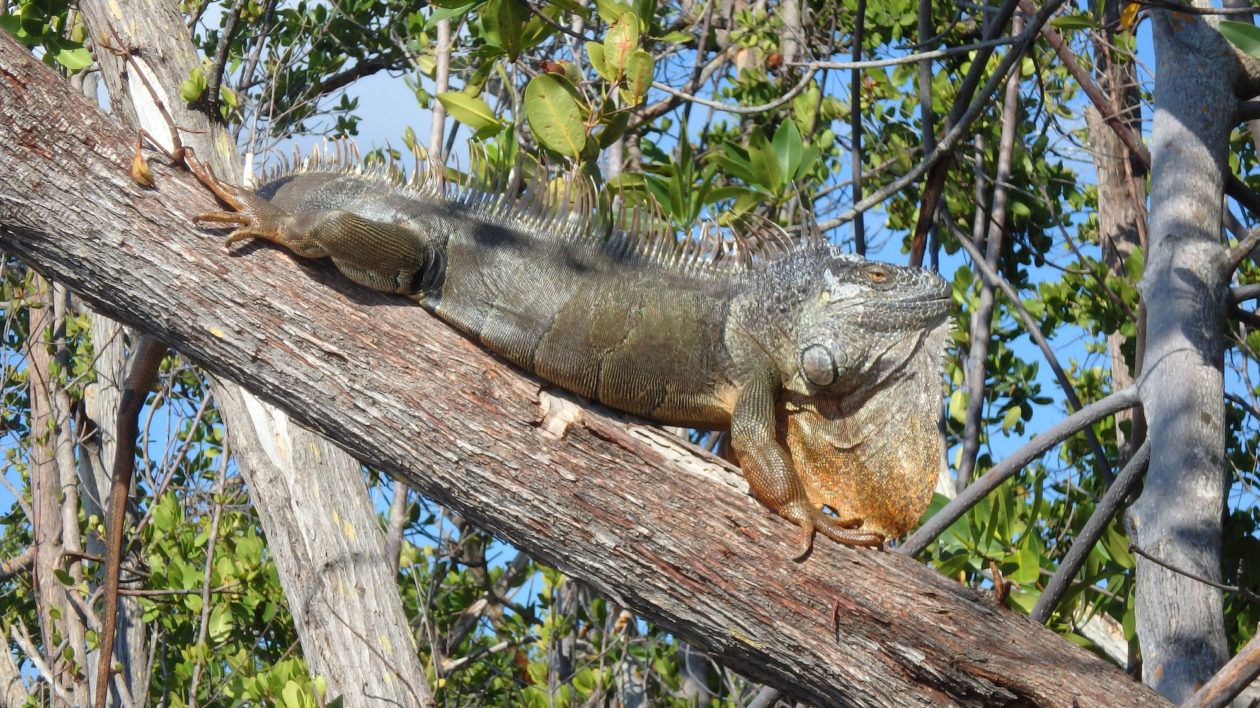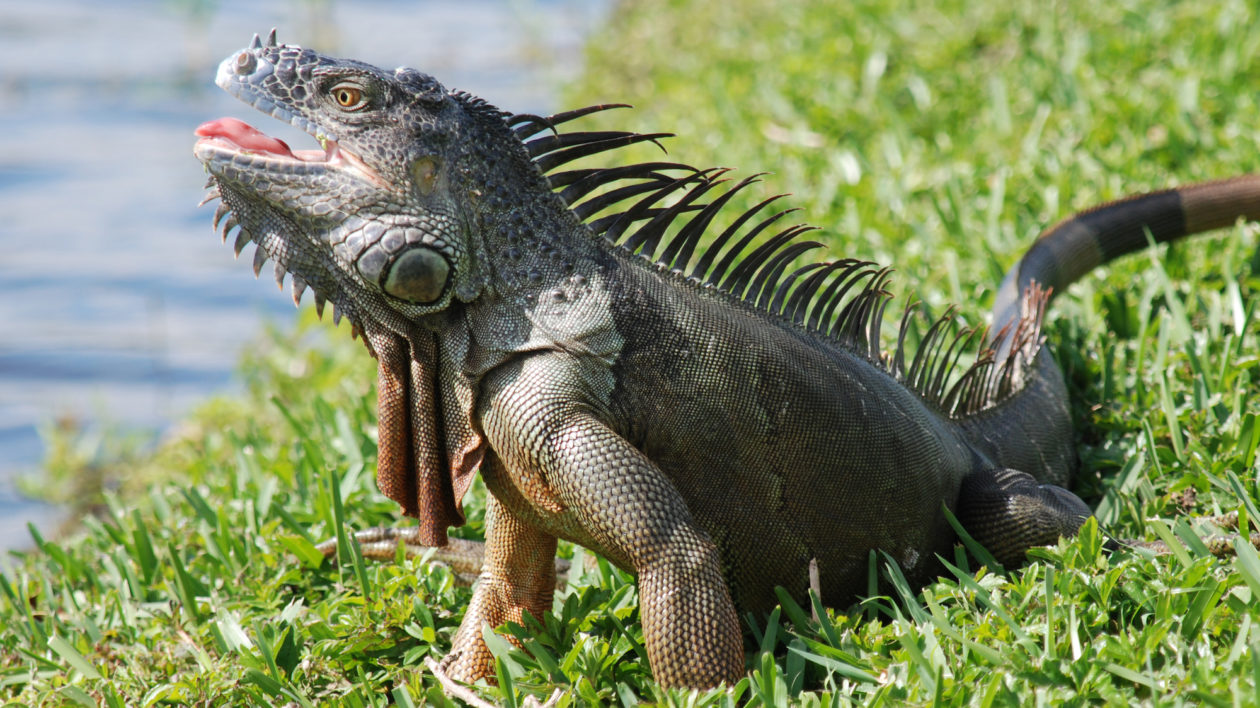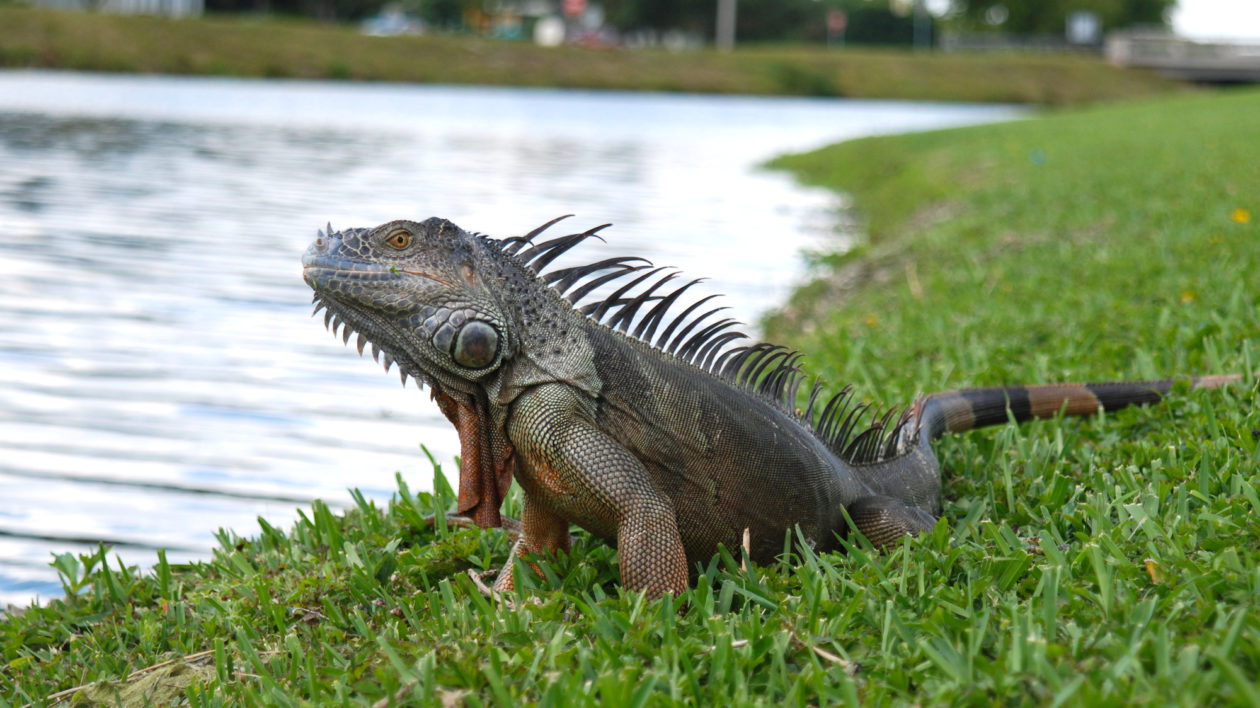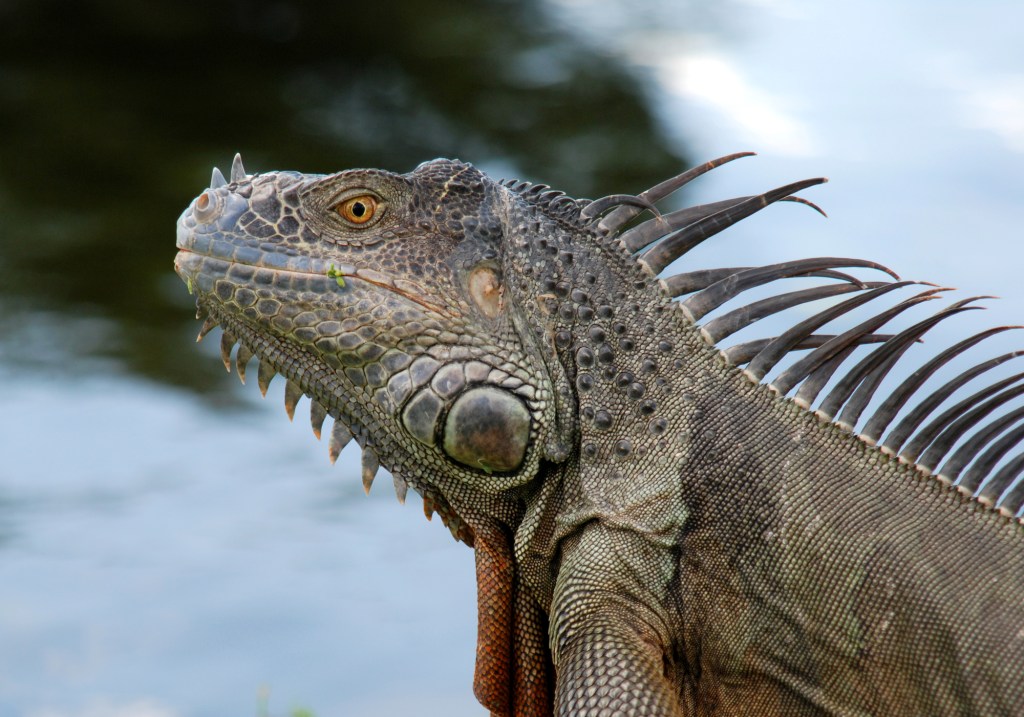A green iguana is not exactly Godzilla, but at least in Florida, people are still preparing their defenses. And unlike Godzilla, this isn’t about one giant lizard, but thousands of them.
Green iguanas are wreaking havoc on seawalls, crops, sidewalks and urban landscaping. They can transmit salmonella to humans when they poop in swimming pools, canals or ponds (which they naturally do). A woman even pulled one out her toilet!
They’ve multiplied to the point that the Florida Fish and Wildlife Conservation Commission has declared open season on them, asking residents to kill them on site and requiring only that it is humane. A whack on the head seems to be the preferred method.
How could this happen to these seemingly innocuous intruders that have resided in the Sunshine State for more than 50 years?
Green iguanas (Iguana iguana) are native to Mexico, Central and South America and the Caribbean, where people farm and eat them. There are other types of iguanas, most of which live in narrow ranges. The Lesser Antilles iguana, for instance, is limited to one island and is endangered.
However green iguanas are common in their native lands and unfortunately now in Florida, too. An herbivore that eats an occasional cricket or tree snail, the green iguana is now consuming large quantities of native Florida flora, like the nickerbean, a plant that the rare Miami blue butterfly relies on.
Iguanas were originally brought to Florida in the 1960’s through the pet trade. They either escaped captivity or were let go by their owners. Happy in Florida’s subtropical climate, they began to multiply while no one was paying attention. Florida has always had a problem with all sorts of invasive species.
While scientists concentrated on feral pigs and pythons, the population of iguanas quietly burgeoned. No surprise. A female iguana can retain male sperm for over a year and often lays up to 65 eggs in multiple nests over a short period of time. And they have long lifespans, up to 20 years.

It was around 2000 when I saw my first iguana in Florida, when my aging parents began spending their winters in Pompano Beach. One morning while visiting them, I went for a jog along an inland canal near their condo. Suddenly I was face to face with a small dinosaur. (Iguanas can grow six feet long.)
The creature was lolling on the grass between the paved bike path and the water. It stood as still as a statue, watching me intently with its suspicious yellow eyes. I stopped jogging and stared back, keeping a respectful distance, then ran for my camera.

Iguanas are known for their keen eyesight, which allows them to spot food and predators in dense foliage. They use visual signals to communicate, namely rapid eye movements. They also have another light-sensing organ, called a “parietal eye”, on the backs of their heads, which is sensitive to changes in the amount of daylight.
The primeval-looking iguana by the bike path intrigued me. Its powerful body and tail was either green or silver depending on how the sun’s rays caught its scaly hide. Long wavy spikes poked toward the sky down the length of its body. A few shorter ones stood out under its chin and on top of its nose. Below its large tympanum, its face had a jowly appearance, made even more so as it opened and closed its enormous dewlap, a flap of skin that looked like an upside-down sail under its chin. After giving me a good look, it bolted into the water.

Though I’ve never seen another iguana quite that big again, the last few times, I’ve visited my parents I’ve seen a lot more iguanas around, sunning themselves or hiding among the roots and branches of the Cyprus and banyan trees. New signs at regular intervals along the bike path warns residents to avoid feeding the iguanas, but I didn’t realize how much of a problem they had become until they made The New York Times and Washington Post within the last year.
The headlines continue. On July 26, USA Today ran an article about “the nightmare of the iguana.” The online version shows video clips of iguanas casually strolling through people’s homes. The article urges people, who do not know how to kill iguanas instantly and safely, to contact a professional removal service.
So, the war on iguanas continues, an example of how a seemingly benign act of releasing an exotic pet back into the “wild” can disrupt its surroundings, even in extensively developed places. We usually think of the impact of invasive species as limited to our untamed places, but as iguanas have shown, they can get out of control in our backyards, too.




I lived in a condo for 29 years! I never saw an iguana when I moved here. About 5 years ago they started to make an appearance and now they are all over. This is not just my condo this is allowing ver Fort Lauderdale! I do not know how we are going to rid ourselves of these animals who leaves feces everywhere. This is a state issue and unless we addressed this serious problem throughout Florida, we will never get rid of them. You can get one and they go across the canal and even if we got rid of the one around our condo they would come from other places! This is an health issues and needs to be addressed Statewide!
Thank yoi